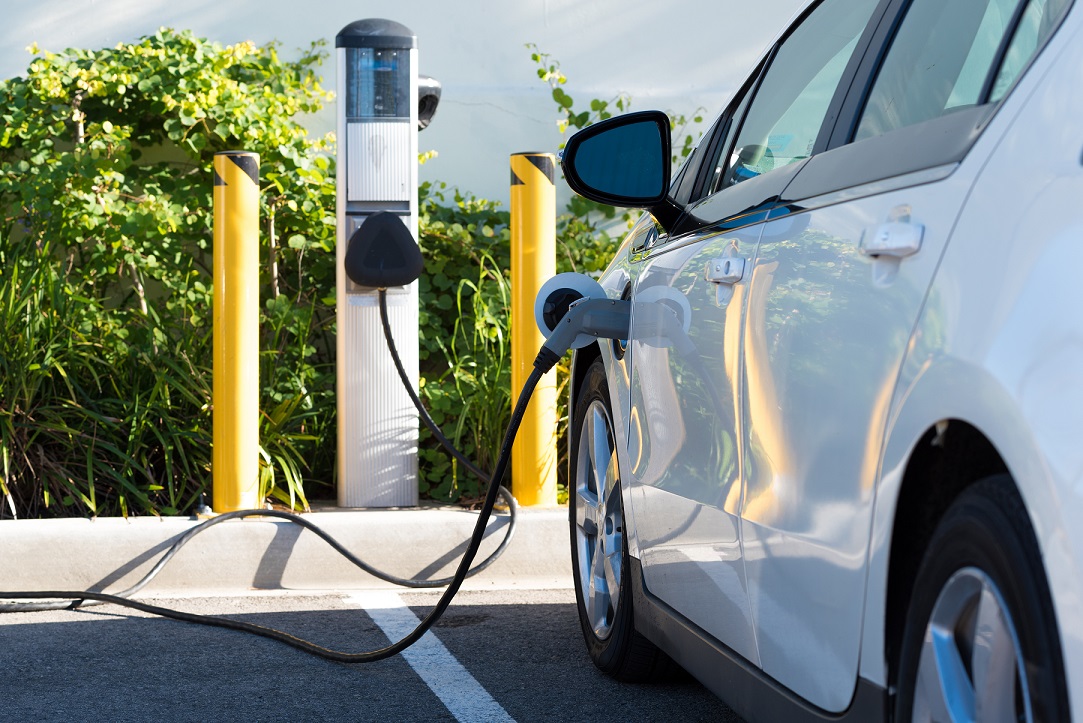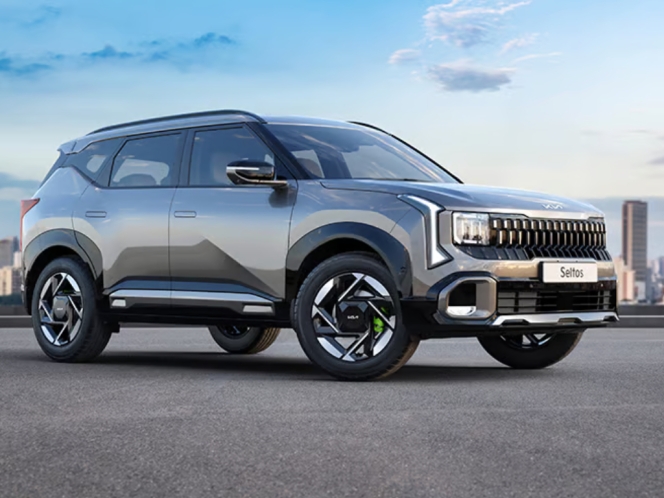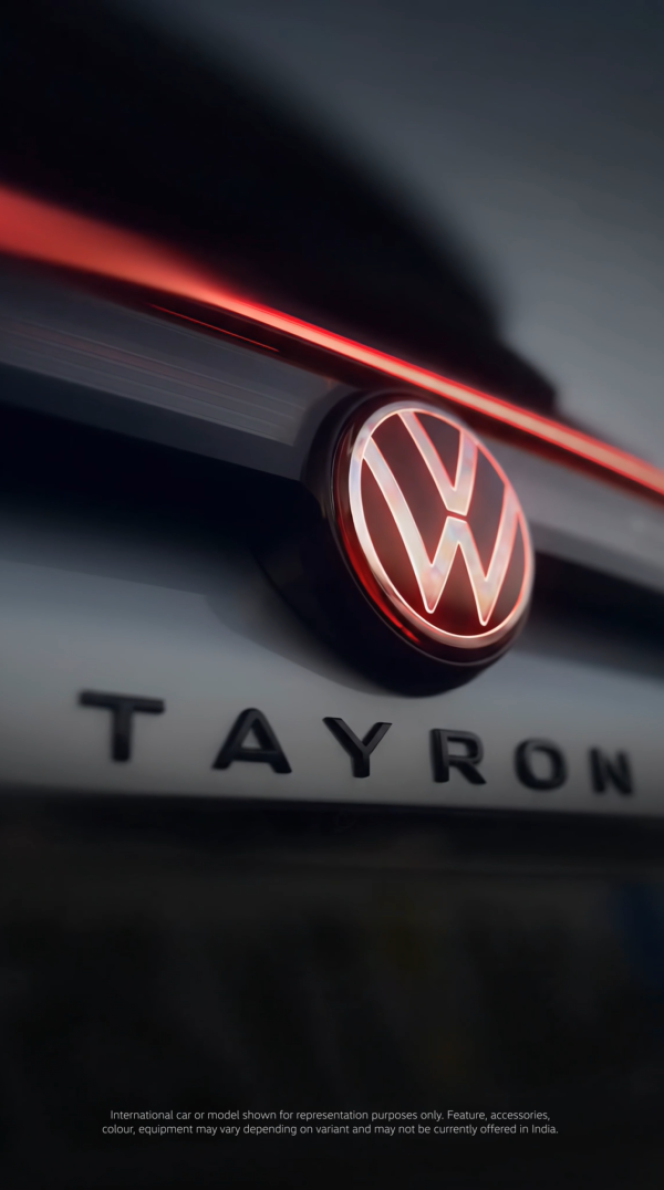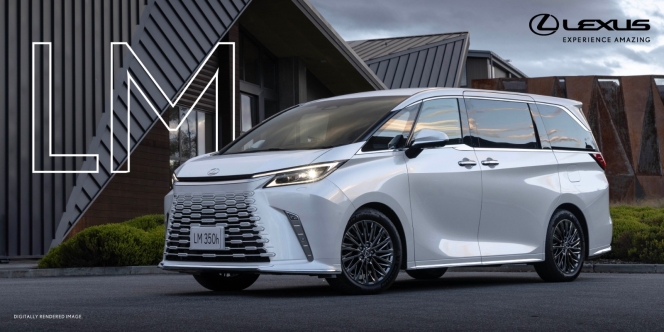Young People See Cars As Status Symbol Finds Continental Study
- By MT Bureau
- October 30, 2024

German tier 1 supplier Continental recently commissioned a representative mobility study in August 2024 to understand the perception about young people on mobility needs.
For the Mobility Study 2024, infas was commissioned by Continental in August 2024 to survey a total of around 5,000 people aged 18 and over in Germany, China, France, Japan and the USA about their mobility habits and attitudes to a variety of mobility issues. In each country, the respective sample is representative of the population; for China, it is representative of the urban population. The aim of the Continental Mobility Study, now in its eighth edition since 2011, is to provide an international comparison of people’s attitudes toward current and future developments in mobility and their personal usage habits. The range of topics covered in this year’s study included automated driving, user experience, AI in cars, sustainable mobility concepts, mobility in urban areas, the affordability of mobility and attitudes toward government regulation in the mobility sector.
The key findings found that overall, 84 percent of car owners in Germany, regardless of age, believe that it is important to own a car. For almost 90 percent, having a car is essential for shopping and running other errands. The majority of young people in Germany are particularly enthusiastic about technological advances in cars. They look forward to the benefits self-driving cars will offer in terms of being able to read, play video games or work (51 percent of 25 to 34-year-olds). In addition to autonomous driving, artificial intelligence (AI) in the form of digital voice assistants is very popular with this group. There is a similar level of approval in the four other countries surveyed in the study.
Philipp von Hirschheydt, Executive Board member responsible for the Automotive group sector, Continental, said, “The findings show that the response to new technologies such as automated driving, large displays and AI in cars varies greatly between generations and also between countries. That’s why we aim to provide customised solutions – market-specific, tailor-made and modular.”
The findings of the study also reveal the current status of the trend toward lower-emission mobility worldwide. Particularly striking is that acceptance of fully electric cars remains low.
In Germany, only 3 percent of all car owners have an electric vehicle. However, just over a third of respondents who do not yet own an electric vehicle believe their next car will be fully electric (39 percent, compared with 34 percent in 2022). By contrast, hybrid drives are highly popular across all countries. In Germany (48 percent) and the USA (47 percent), nearly half of respondents who do not own an electric car can imagine their next vehicle being a hybrid with a combustion engine and an electric motor.
In China, that figure rises to almost nine out of 10 respondents (86 percent). This means that hybrid cars could increasingly bridge the gap to e-mobility and give it a renewed boost. With a share of 68 percent, younger people in Germany aged between 25 and 34 are particularly interested in electric cars – also compared with their international peers.
Vehicle as a status symbol
On the one hand, younger people up to the age of 34 in Germany do not feel that attached to cars. For them, more than for older respondents, it is one of many means of transportation available. On the other hand, generation Y and Z drivers born in the 1990s and later have a clear emotional connection to their cars: for more than half of 18 to 34-year-olds (54 percent) in Germany, cars are regarded as a status symbol – twice the share among respondents aged 45 and over. People aged between 18 and 34, particularly those living in large cities, see cars as a prestige item (67 percent). In small towns and rural areas, the approval rate is around 49 percent. This view of the car is accompanied by growing expectations. Of the 25 to 34-year-olds surveyed, for example, 51 percent believe that cars of the future should not only be a safe means of transportation, but also a place to relax and work.
Tech attracts young people
The study also found that younger people in Germany also had a positive attitude toward highly automated and autonomous driving, with around two-thirds (65 percent) of 18 to 34-year-olds seeing this as a useful development. Among older respondents aged 55 and over, 39 percent share this view. Around two-thirds of younger people up to the age of 34 also believe that state-of-the-art technologies should be mandatory in newly registered cars in order to make traffic even safer – a viewpoint that signals approval of the EU directive requiring certain advanced driver assistance systems in new cars, which has been in force since July 2024.

Another future technology that is particularly popular with younger people is AI assistants in cars. Almost three-quarters of respondents (74 percent) between the ages of 18 and 34 would welcome an AI voice as a service that, like a virtual travel companion, provides useful information about sights and restaurants along the route, finds the nearest gas or charging station, searches for free parking spaces or even compiles personal messages.
“Younger people in particular have changing expectations of cars. These are closely linked to pioneering technologies such as automated driving, which deliver new user experiences. At Continental, we’re already equipping cars with AI. Together with our partner Google Cloud, we have developed a virtual companion for drivers. We are particularly proud to be one of the first automotive suppliers worldwide to integrate Google Cloud applications directly into our vehicle computers,” added Hirschheydt.
Autonomous & AI
The comparison between countries reveals a widespread openness to highly automated and autonomous driving in Asia across all age groups. In China, nine out of 10 respondents (90 percent) view the relevant technologies as a useful development, while in Japan, almost three-quarters (72 percent) share this sentiment. In France (60 percent) and the USA (56 percent), more than half of those surveyed have a positive attitude. In Germany, around one in two respondents (49 percent) feel the same. An AI-powered virtual travel companion is particularly popular in China, where nine out of 10 respondents (91 percent) say they would like to have such a service. In the USA (66 percent) and Japan (63 percent), around two-thirds express this wish, while in France (58 percent) and Germany (57 percent) more than half would be happy to have the technology.
There is broad agreement across all countries on the ideal size of a car display for infotainment content. Most people prefer larger displays, with 90 percent of respondents in China favouring this option.
In Germany (81 percent), France (79 percent) and the USA (80 percent), eight out of 10 respondents would like their navigation, vehicle data and music to be shown on large screens.
In Japan, the figure is more than two-thirds (69 percent). However, preferences differ significantly when it comes to technological details. While the majority of respondents in Japan (79 percent) and more than half in Germany (57 percent) prefer a simpler display on car screens, a slight majority in the USA (58 percent) favour more colours. By contrast, many features are popular in China (69 percent). In Japan (70 percent), the majority prefer a more straightforward digital design, while in Germany, around half feel the same way (55 percent).
There are also differences between countries when it comes to the question of whether a display should be controlled by voice or manually: voice control is particularly popular in Japan (67 percent), more than half are in favour of it in China (59 percent), while the number is significantly lower in Germany (43 percent). In the USA, just over half (55 percent) also prefer to operate a display manually.
Hybrid
The study shows that hybrid drivers in Germany have an above-average interest in all-electric mobility – a strong indication that hybrid cars can play a key role as a bridging technology for the transition to fully electric drives.
For example, 43 percent of respondents who currently use a vehicle with a combined combustion engine and electric motor say that their next car will definitely be an all-electric vehicle. Those who drive a gasoline or diesel vehicle are significantly less open to such a switch (12 and 19 percent respectively). In addition, a clear majority (58 percent) of hybrid drivers would be willing to buy an electric car without a government subsidy.
The data suggests that hybrid vehicles are boosting people’s confidence in e-mobility and may help reduce any reservations about fully electric vehicles. One group with significant future potential for this development is the 48 percent of respondents who do not drive an electric or hybrid car and for whom an all-electric car is not currently an option, but who are considering a hybrid as their next car.
Varying degree in e-cars
The shift to electric mobility is under pressure in Germany, where sales of all-electric cars are faltering. According to the latest figures of the Continental study, electric cars represent a significant share (10 percent) of the overall passenger-car fleet in China, while only 3 percent of respondents in Germany drive an all-electric car and 91 percent a car with a combustion engine (China: 80 percent). There is potential for higher sales of electric cars in Germany, particularly among those aged 18 to 34. In this age group, around two-thirds (64 percent) of respondents believe it is certain or likely that their next car will be fully electric – a trend that gradually diminishes in older generations.

A look at age-dependent attitudes toward electric mobility reveals that, like many other technological developments, e-mobility is more appealing to younger drivers than older ones. They are more willing to forgo subsidies: 50 percent of 25 to 34-year-olds would consider buying an electric car without government assistance. However, the willingness to fully finance an electric vehicle decreases significantly among those aged 45 and older.
EVs and subsidy
The study found that two-thirds of respondents in Germany link the purchase of an electric car to a government subsidy is an expression of their concerns about being unable to finance an electric car on their own. In Germany, 71 percent of respondents worry that mobility will no longer be affordable due to rising energy prices. In the 2022 Mobility Study, 73 percent of people in Germany expressed their concerns about the affordability of mobility.
What’s more, 65 percent of respondents fear that they will not be able to afford an electric car in the near future and 56 percent are worried that driving could soon become too expensive for them. As a result, a clear majority (80 percent) expect policymakers to create the framework conditions to ensure that driving remains affordable. At the same time, they believe driving should be made more sustainable in the most cost-neutral way possible. Almost three-quarters (73 percent) of respondents think that the cost of environmentally friendly cars needs to fall. Regulatory interventions such as a speed limit of 130 kmph on highways are met with acceptance (62 percent), provided they do not lead to price increases. Younger respondents are less price-sensitive. They are much more prepared to pay a premium for environmentally friendly cars, especially if they are completely carbon-neutral in production and operation (40 percent of 18 to 24-year-olds compared with 13 percent of 45 to 54-year-olds).
Sustainable tyres
Sustainability is an important concern for people with cars is also demonstrated by their attitude to tyres. According to the study, almost eight out of 10 drivers in Germany (84 percent) who also value tyre recycling consider it important that their tyres contain an increasing share of environmentally friendly materials. When purchasing tyres, younger people (61 percent of 25 to 34-year-olds) are more concerned than older people about what happens to the tyres at the end of their service life.
Furthermore, 44 percent of car owners in Germany would be willing to pay a premium for tyres made from a higher share of renewable and sustainable materials. Here again, this willingness is most pronounced among 25 to 34-year-olds (65 percent).
Kia India Surpasses 500,000 Connected Vehicles On Indian Roads
- By MT Bureau
- January 10, 2026

Kia India, one of the leading passenger vehicle manufacturers, has announced that it has exceeded 500,000 connected cars in the Indian market.
The OEM said its connected car variants now account for approximately 40 percent of the company’s domestic wholesale volumes. This growth is supported by the Kia Connect 2.0 platform and the Connected Car Navigation Cockpit (ccNC).
The Kia Seltos is the main contributor to this total, representing about 70 percent of the connected vehicle sales, followed by the Sonet and Carens models. Data from the company indicates a trend of customers renewing their connectivity subscriptions after the initial complimentary period.
Technical features within the Kia ecosystem include:
- OTA Software Updates: Remote vehicle diagnostics and software installations to reduce dealership visits.
- Digital Key 2.0: Vehicle access and operation via smartphone or smartwatch using Ultra-Wideband (UWB) or NFC technology.
- Surround View Monitor (SVM): A 360-degree camera feed accessible through the Kia Connect app.
- Voice Recognition: Multilingual support for vehicle functions in English, Hindi, Tamil and Bengali.
Atul Sood, Senior Vice-President, Sales & Marketing, Kia India, said, "Kia India has consistently differentiated itself through its vehicle design excellence and technology leadership. Our continued focus on enhancing connected features and customer engagement initiatives such as Kia Drive Green has strengthened adoption and interaction across our connected ecosystem. The strong customer retention beyond the complimentary subscription period underscores the sustained relevance and long-term value of Kia Connect.”
The company also utilises Plant Over-The-Air (P-OTA) updates, a system that ensures vehicles are programmed with the most recent software versions before they leave the manufacturing facility.
- Hyundai Motor India Limited
- Tamil Nadu State Level Safety Award
- Directorate of Industrial Safety and Health
- Safety Governance
Hyundai Motor India Receives Tamil Nadu State Level Safety Award
- By MT Bureau
- January 08, 2026

The Sriperumbudur facility of Hyundai Motor India Limited has been honoured with the Tamil Nadu State Level Safety Award for 2022 by the state’s Directorate of Industrial Safety and Health (DISH). The prestigious award was presented by Minister for Labour Welfare & Skill Development C V Ganesan and DISH Director Anand to senior company executives Mukundan M S and Senthil Kumar R M. This accolade, granted in the Large-Scale Industry category, acknowledges Hyundai’s ongoing dedication to exceptional safety performance, marked by a notable decline in incident rates and a systematic focus on risk mitigation.
Operating in India for over 30 years, the plant has consistently fostered a robust safety culture through comprehensive initiatives. This includes implementing widespread safety campaigns, establishing diligent monitoring protocols and driving continuous improvement programmes. The company’s approach integrates rigorous processes, proactive assessments and regular training aligned with international benchmarks, all underpinned by strong safety governance. Hyundai Motor India reiterates that the well-being of its employees is a primary concern, and it remains steadfast in its mission to advance its safety systems and sustain an environment where a culture of excellence is paramount.
Gopalakrishnan C S, Whole-time Director & Chief Manufacturing Officer, Hyundai Motor India Limited, said, “Safety at Hyundai is not a standalone initiative – it is a deeply embedded culture practiced at every level of our operations. Our goal is simple: a safe, secure working environment for every employee, every day. This award affirms the collective commitment of our teams and motivates us to strengthen our safety excellence even further.”
Volkswagen India Confirms Tayron R-Line Launch In Q1 CY2026
- By MT Bureau
- January 08, 2026

Volkswagen India has confirmed that its new flagship SUV, the Tayron R-Line, will launch in the first quarter of 2026. The vehicle is aimed at the seven-seater SUV segment and will be locally assembled at the company’s plant in Chhatrapati Sambhajinagar to ensure market competitiveness.
The Tayron R-Line occupies the top position in the brand’s SUV range in India. It features the 'R-Line' trim, which includes specific design enhancements to its silhouette. The model is intended for customers requiring a seven-seat capacity alongside a focus on road presence and lifestyle versatility.
Nitin Kohli, Brand Director, Volkswagen India, said: “As we build a premium portfolio of products, we continue catering to the evolving aspirations of Indian car buyers. The all-new Tayron R-Line is the authentic flag-bearer that will drive this vision for Indian consumers. Ensuring competitiveness, we will be locally assembling this SUV at our plant in Chhatrapati Sambhajinagar.”
The introduction of the Tayron R-Line follows Volkswagen's strategy to expand its portfolio in the Indian market with vehicles that offer higher passenger capacity and updated design aesthetics.
Lexus India’s LM And LX Model Clock 50% Sales Growth In CY2025
- By MT Bureau
- January 08, 2026

Toyota Motor Corporation-owned luxury brand Lexus India has concluded 2025 with an increase in demand for its flagship models – the LM and LX, which it said recorded a 50 percent YoY rise in sales.
They accounted for approximately 19 percent of the company’s total volume. The RX model also served as a contributor to the brand's growth, achieving an 18 percent increase compared to the previous year. The RX represented 22 percent of overall sales, assisting Lexus in expanding its presence within the luxury SUV segment.
At present, the LM 350h and LX 500d occupy the top tier of the Lexus portfolio in India. The LM 350h is designed as a luxury mover, focusing on travel comfort and interior refinement for passengers. Since its introduction, the model has targeted enthusiasts seeking a travel experience comparable to first-class standards.
The LX 500d has seen a response driven by demand for SUVs that combine off-road capability with luxury features. The vehicle is engineered for diverse terrains while maintaining cabin comfort and control through integrated technology and a diesel powertrain.
Hikaru Ikeuchi, President, Lexus India, said: “We are immensely thankful to our guests for their trust and support throughout 2025. The strong performance of our halo ultra-luxury models, LX and LM, reflects their confidence in Lexus and our dedication to delivering exceptional products and experiences that continue to push boundaries. As we move into 2026, we are encouraged by the outlook for luxury vehicles in India and will remain focused on delivering even more exciting offerings and memorable experiences.”







Comments (0)
ADD COMMENT